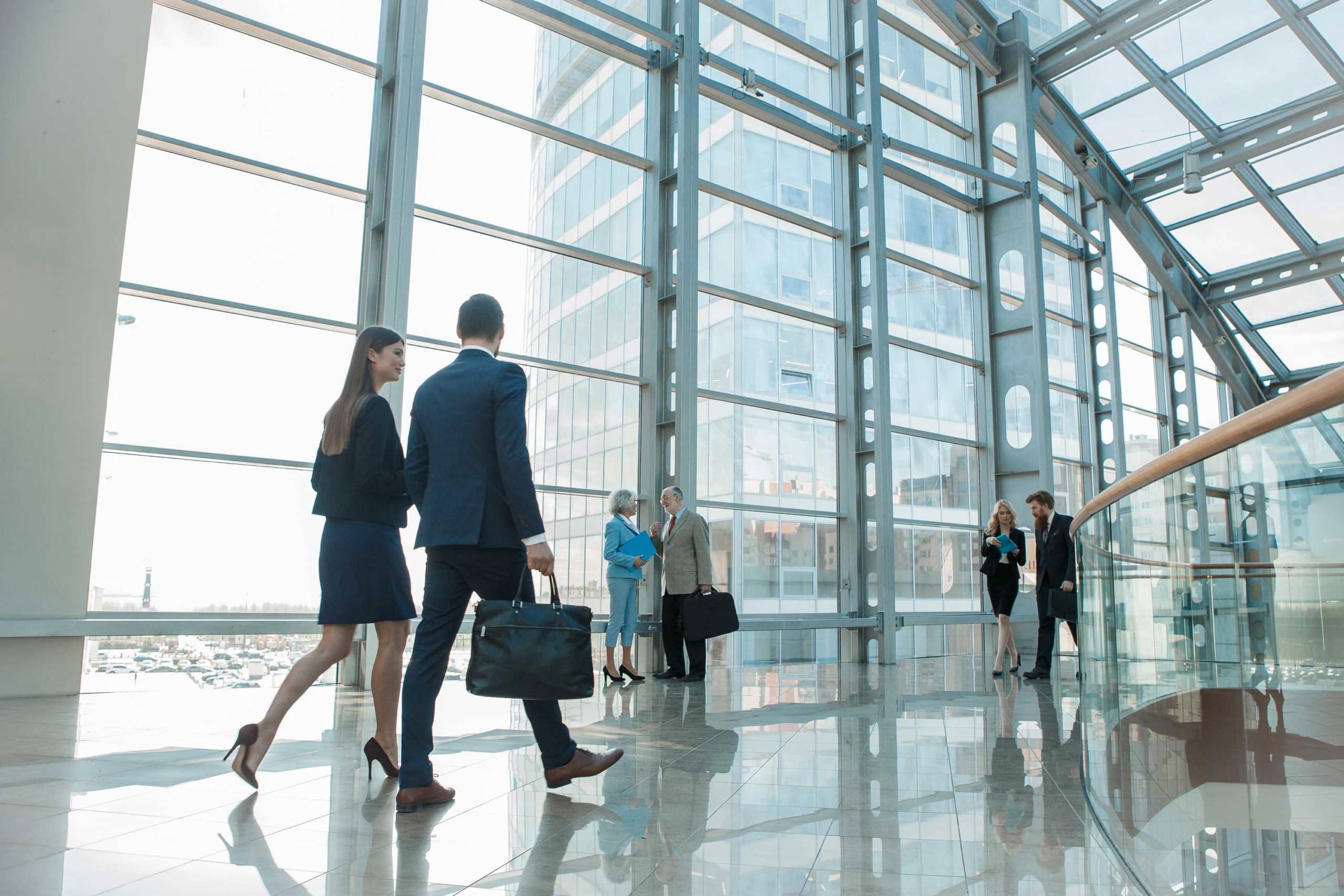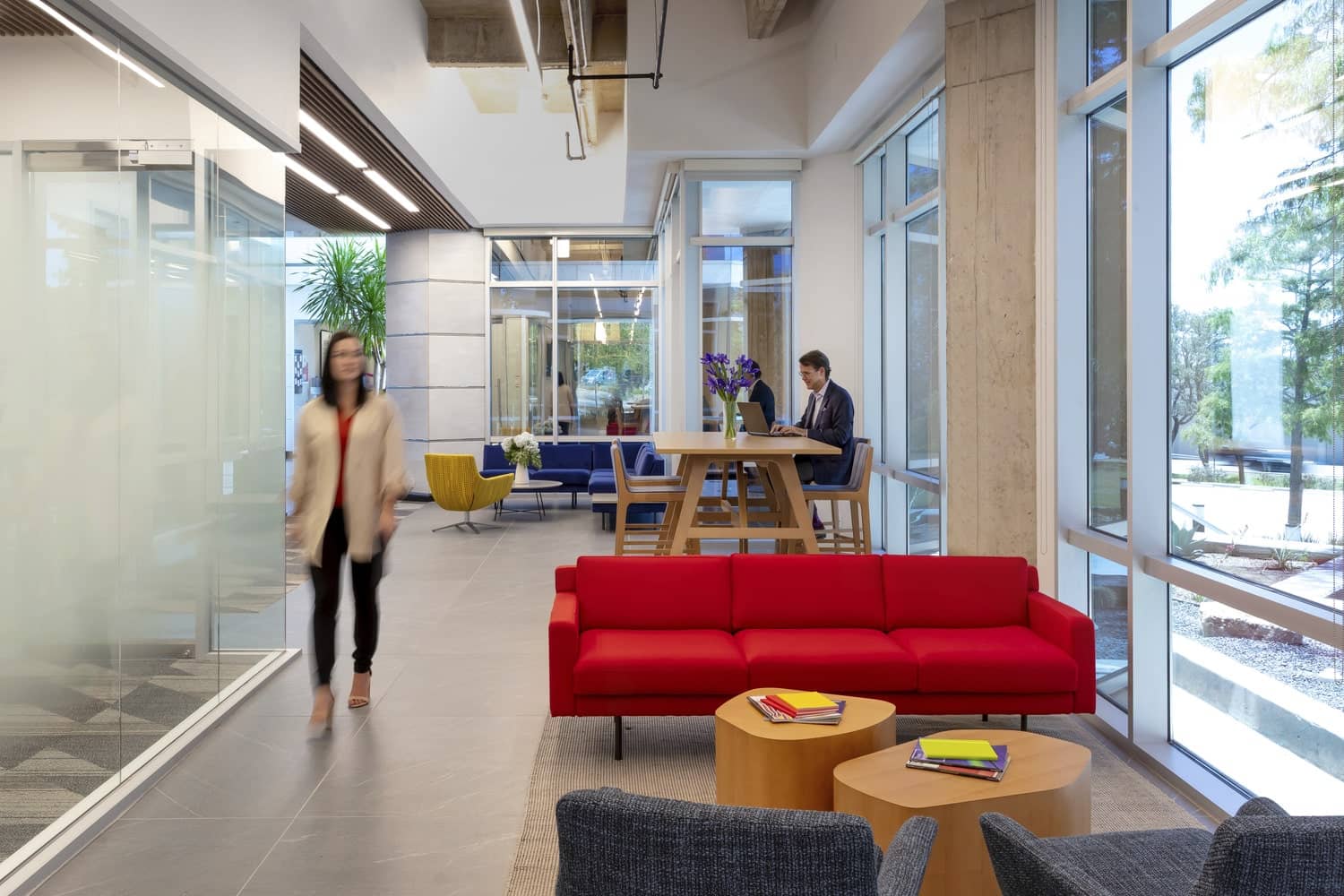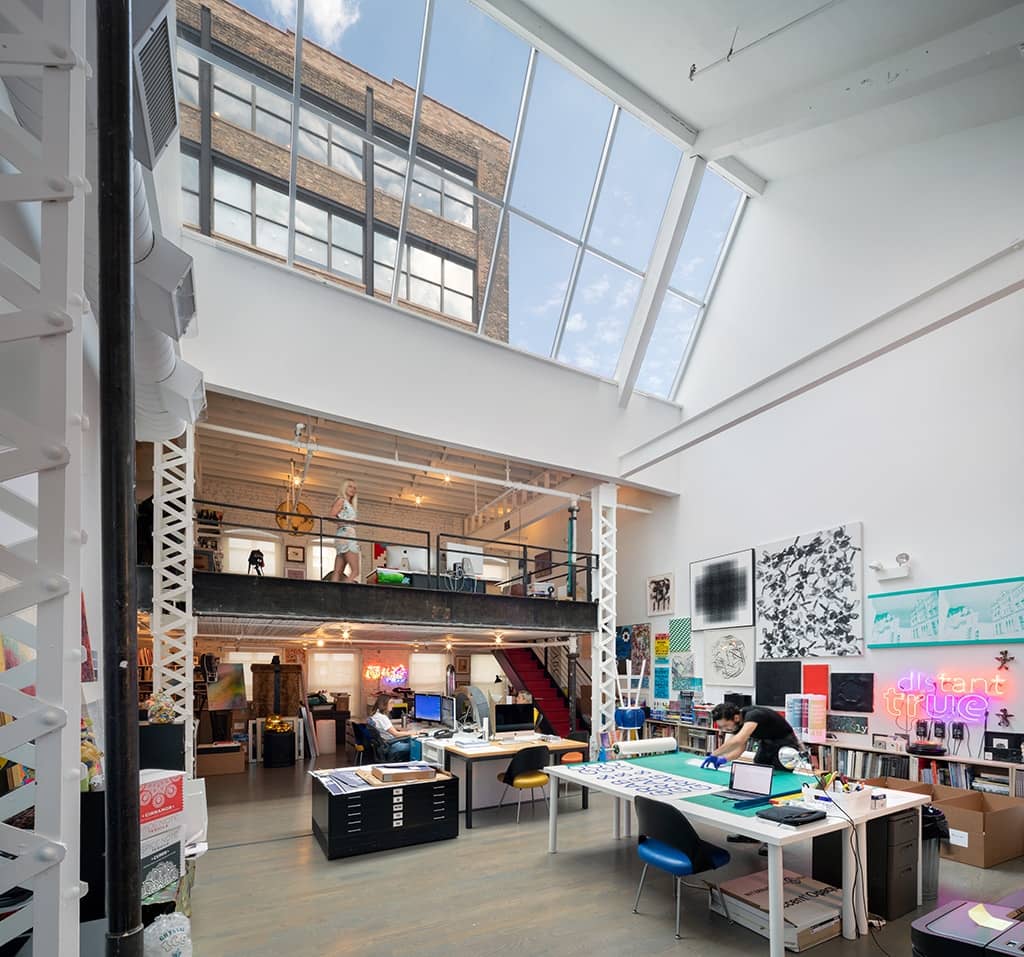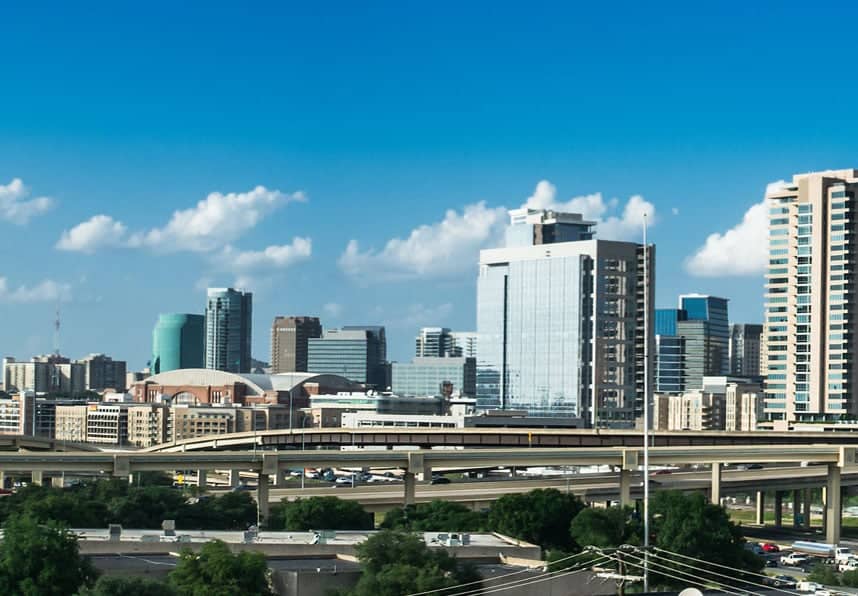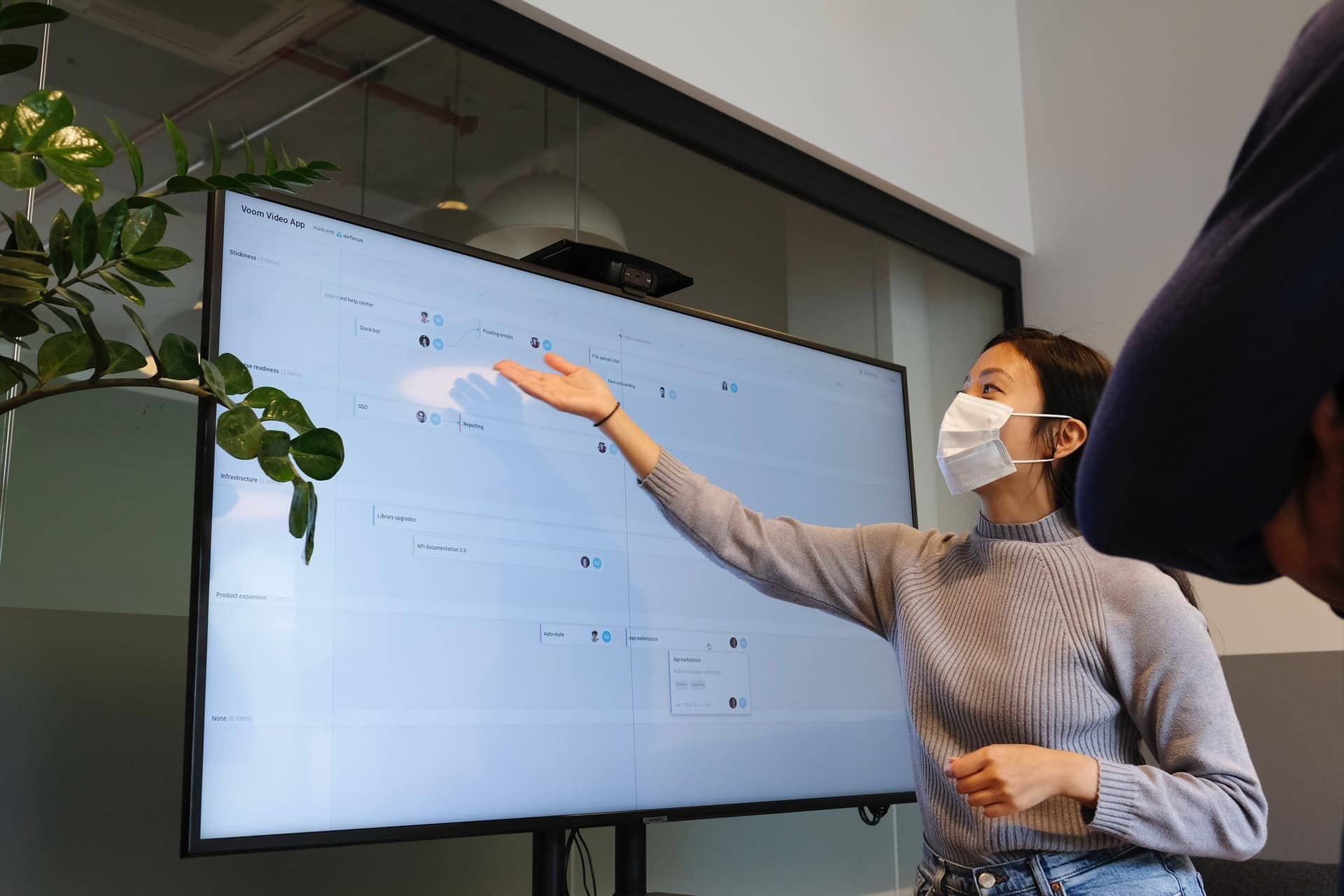Bringing Employees Back to The Office
With the pandemic winding down, many employees are headed back to the company office simply because their work cannot be done elsewhere with equal productivity. Average office occupancy in 10 major U.S. metros came in at 44% of pre-pandemic levels during the first week of June, the highest mark since the pandemic began in 2020, according to Kastle Systems. Earlier this year, Pew Research Center estimated that “most U.S. workers (60%) don’t have jobs that can be done from home, and others who do have these types of jobs are going into their workplace at least sometimes.”
The new office work environment increasingly bridges organizational needs and employee preferences. In an April 2022 letter to shareholders, JPMorgan Chase CEO Jamie Dimon explained that going forward, his organization would likely see half of all its employees engaged full-time at the office.
The bottom line is that an overwhelming majority of workdays will continue at the office and — in the best situations — in environments that include smart office innovations. As a result, the office environment will be welcoming, accommodating, and desirable. It will be a “regenerative workplace,” a phrase — according to JLL — that means “the most forward-thinking companies will shape a workplace strategy that puts people at the center. By taking care of their employees’ health and wellbeing, they will be in a position to achieve sustainable performance.”
Office Nostalgia
There’s no doubt that the Great Resignation and work-from-home (WFH) movements have attracted both headlines and widespread interest. That said, such trends are not without practical hurdles.
According to workforce management provider UKG, more than 15 million resignees believe they were better off with their old jobs. Fewer than half of those left for better pay, and one in five had already returned to their old job.
Employees who stay with their employer, but work-from-home, also report important hurdles. JLL found that WFH “blurred boundaries between the personal and professional lives of many employees across the globe.”
JLL added that “75% of employees struggle to maintain strong relationships with colleagues while working from home. Many feel disconnected from office life and their workplace community due to prolonged remote working.”
Homeworking Fatigue
One allure associated with the WFH movement has been the opportunity to have a flexible schedule. Unfortunately, what starts out as an advantage is too often replaced with mission creep and even more hours on the job.
In 2020, global staffing firm Robert Half found that “nearly 7 in 10 professionals (68%) who transitioned to a remote setup as a result of the pandemic said they work on the weekend. In addition, 45% of remote employees reported regularly putting in more than 8 hours a day.”
Employees Want More Balanced Working Patterns
There’s no doubt that the pandemic produced changing work patterns. Offices across the country quickly closed or were operated by skeleton crews. Distributed work — WFH — became common. The nine-to-five schedule was disrupted. If someone could do better work at 6 a.m. or midnight, fine.
But more than just one or two patterns shifted to evolve corporate office standards. For example, responsibilities often changed for those who worked from home.
In 2020, Microsoft found that more than half of the parents surveyed said “it’s been difficult balancing household demands while working from home. This burden was felt most heavily by Millennials as well as new entrants to the workforce, Generation Z. This may be because this group is more likely tasked with caring for younger children or sharing workspaces with roommates while managing a full-time job.”
The search for a better life/work balance is a matter of acute importance for many workers. Pay is important, but many employers have found that salary is not sufficient to ensure either retention or robust recruitment.
The “Purpose-Led Office” And “Regenerative Workplace” Are the New Future
It might seem that ever-changing office concepts are a response to the Great Resignation, the willingness of employees to leave jobs that otherwise offer great perks and pay.
According to economist and Nobel Laureate, Paul Krugman, the reality is different. In his April 2022 New York Times column, Krugman wrote that “it still seems reasonable to talk about a Great Resignation. At this point, however, there’s basically nothing there. It’s true that an unusually high number of workers have been quitting their jobs, but they have been leaving for other, presumably better jobs, rather than leaving the work force.”
But if the Great Resignation is not entirely to blame, then why is it that the regenerative workplace has begun to emerge? The reason, basically, is that employers have increasingly learned how to make work more enjoyable for employees. Another is that the boundaries between home and office are not as formal or hardened as they once were. The lines have been blurred.
“Remote and hybrid work,” explains ADP, “are now an established feature of the working world, blurring the distinction between home and the workplace. This shift from the traditional 9-to-5 office-based model cannot be undone and has long-term implications for the jobs market.”
Employees Expect Employers to Support Their Overall Satisfaction, Health and Goals
As WFH has taken a social and mental toll, employees are looking at job requirements differently. In the same way that vacation days and health insurance are now routine parts of compensation packages, employees increasingly expect organizations to support their overall health.
Beyond pay, Microsoft found that “the top five aspects of work that employees view as ‘very important’ for an employer to provide are: positive culture (46%), mental health/wellbeing benefits (42%), a sense of purpose/meaning (40%), flexible work hours (38%), and more than the standard two weeks of paid vacation time each year (36%). While new-to-the-workforce Gen Z shares the same top three priorities, they list positive feedback and recognition as their fourth priority, while ranking a manager who will help advance their career in fifth place.”
Organizations will also need to understand that even in creative office environments, individual generations tend to have different interests and communication preferences.
According to Paychex, “Gen Xers, baby boomers, and members of the silent generation may be more deferential to authority than their later-born counterparts. They may also put more stock in loyalty to a specific company. Also, since each generation can have a different preferred communication method, the potential exists for information to be missed by certain employees who are not as reliant on technology.”
Many things are now in flux as the workplace recovers from the pandemic, including new ways to continue to cope with stress. As such, new benefits will emerge to meet changing needs. Organizations will want to offer novel healthcare approaches — not only to attract and keep employees, but also because such benefits are likely to be far less costly than the alternative, which is the high price of workforce churn.
“The implications for companies that fail to address the issue could be huge,” according to staffing firm Korn Ferry. “At the mild end: reduced levels of performance and engagement, and real problems attracting and retaining the best people. At the more severe end: total workforce burnout,” which is why landlords will continue to offer office space that optimizes collaboration and supports flexibility for employees.
Discover much more on office and other commercial real estate, visit KBS.com/Insights.
